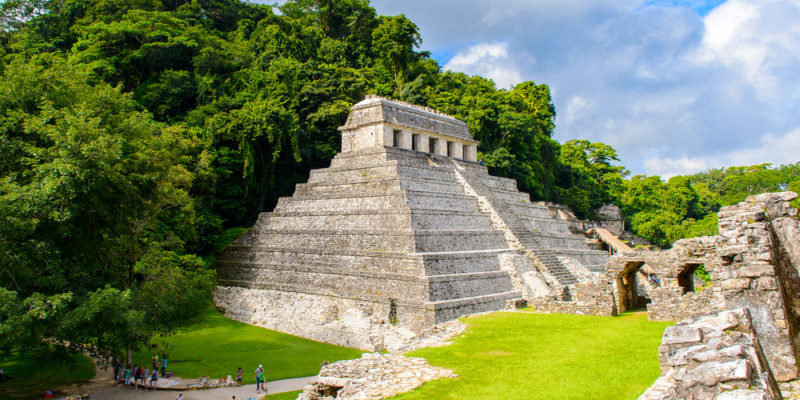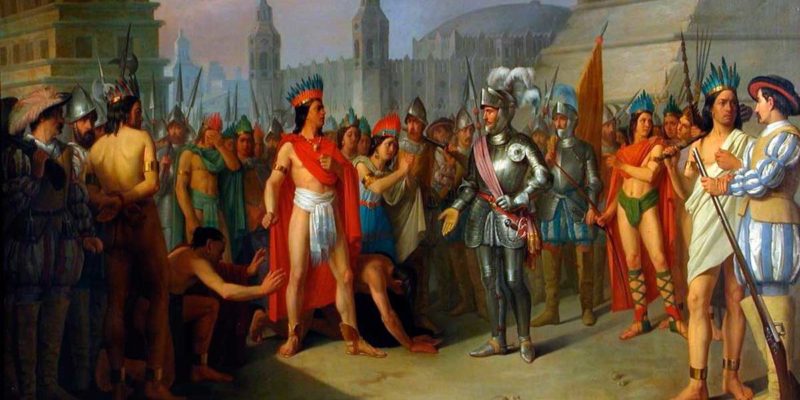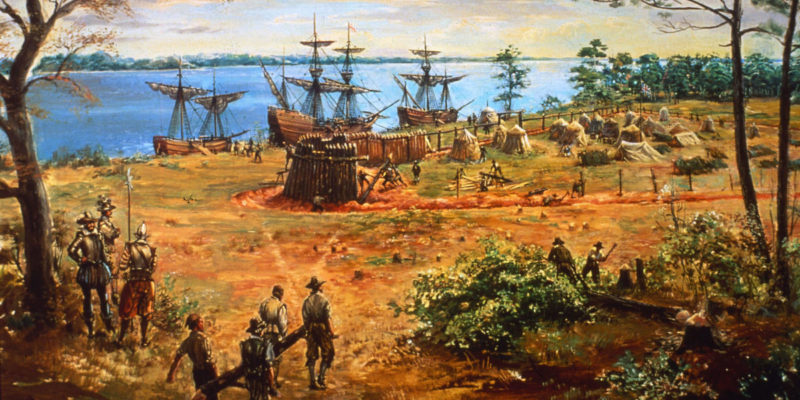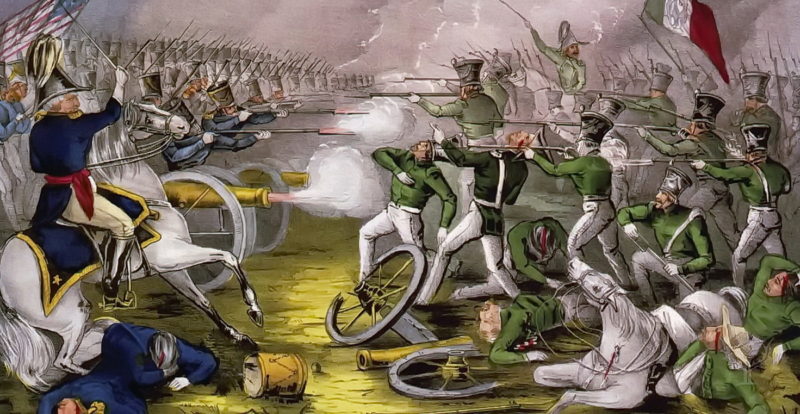We explain everything about the history of Mexico and main events. Also, its characteristics and civilizations.
What is the History of Mexico?
The history of Mexico is, logically, the series of events that occurred in the territory of the current Mexican nation from the appearance of the first civilizations in the region, almost 4000 years ago, until the processes of conquest by Spain, colonial life, war of independence, and the foundation and development of the Mexican Republic as we know it today.
The history of the Mexican nation is particularly interesting due to its wealth in terms of pre-Columbian nations, which constituted a mosaic at the time, and which provide it with a portentous ancestral heritage, which contrasts with the society built by the three centuries of Catholic colonization.
Next, and through a complete summary of the main events in the history of this country, we will review the main characteristics.
Mesoamerican civilizations

The first inhabitants of the area date back to 20,000 years BC. C. and they were nomads, hunters and gatherers, until the establishment of a sedentary agricultural culture in Mesoamerica. Mesoamerican civilization spread throughout Central America and consisted of a significant number of primitive cultures such as the Olmecs, Zapotecs, Toltecs or Mixtecs.
Many of these cultures left important archaeological remains and a more or less common imaginary was transmitted to each other, in which gods such as the feathered serpent (Quetzalcóatl) and pyramidal architectural styles predominate.
The last of these dynasties was the Mexica or Aztec, who founded their Empire (Mexico-Tenochtitlán) on the remains of the ancient city of Tenochtitlán, one of the largest known to the region.
More on: Mesoamerican Civilizations
Conquest of Mexico

The conquest of the Mexica Empire by the European conquerors, led by Hernán Cortés , took place from the beginning of the 16th century (1519-1521), through a bloody large-scale war in which the Spanish invaders allied with some other indigenous tribes, such as the Totonacs, who had historically been oppressed by the Aztecs , and razed the Empire of Moctezuma Xocoyotzin.
The aborigines identified the arrival of the settlers with events from their own mythology and were initially friendly, generous in trade, but the conquerors' greed for treasure was insatiable. The war was not long in coming.
On the ruined Mexica Empire, besieged by European diseases unknown to the Aztecs, the Viceroyalty of New Spain was founded .
Mexico City Foundation
The City of Mexico , capital of the newborn Viceroyalty, was literally founded on the ruins of Tenochtitlan, and was the basis of the occupation of the Mexican territory, whose agricultural and mining began promptly.
This city would grow during the colony and would play a central role in the establishment of the independent republic , until it became, today, one of the great metropolises of the continent.
The city still contains samples of its aboriginal and colonial past , which explains its cultural and architectural richness, within the framework of a modern city of about 21 million inhabitants (including the metropolitan area).
Mexico City is known for its traditions, its levels of urban violence and for having been the scene of tragedies such as the Tlatelolco Massacre or the 1985 earthquake.
Colonial period

The Mexican colonial era, like that of the rest of the Spanish-American continent, was characterized by presenting a feudal society , composed of racially distinct classes: European whites and Creoles, Indians reduced to servitude, and black slaves brought from Africa .
The indigenous population that managed to survive the harsh conditions of oppression was subjected to a process of evangelization and colonization of three hundred years . This led to a complex syncretism that amalgamated local and European traditions, at the same time that processes of racial miscegenation began to take place.
Colonial Mexico was governed by a Viceroy and responded, like the rest of the colonies, to the instructions of the peninsular metropolis, which ruled from a distance and imposed an economic model that benefited it to the detriment of the local white elites.
War of independence
The growing economic tensions between the colonies and mainland Spain reached their peak in the 19th century, when the ideas of the French Enlightenment and the example of North American independence instilled in the colonial elites the idea of emancipation.
The propitious moment came with the deposition of the Catholic King Ferdinand VII by Napoleon , a situation that the colonies took advantage of to declare themselves free. In the case of Mexico, this began in 1810 with the Grito de Dolores, a call to arms made by Manuel Hidalgo from the church of Dolores in Guanajuato.
The war lasted until 1821, when the rebel generals Agustín de Iturbide and Vicente Guerrero proclaimed the Plan of Iguala and brought together the insurgent factions with the support of the clergy and the aristocracy.
First Mexican Empire

A brief monarchy led by Agustín Iturbide (Agustín I) followed, whose territory coincided with the Viceroyalty (except for the Captaincy General of Cuba, Santo Domingo and the Philippines) plus the provinces of the Captaincy General of Guatemala.
The coronation happened in 1822 , after a government meeting, and aspired to a monarchy moderated by a national congress. Iturbide himself modified the flag to adopt green, white and red in vertical stripes, adding the royal eagle crowned on a cactus, from a Nahuatl legend.
Soon there were plans to overthrow the monarchy and establish the republic , on the part of Vicente Guerrero himself and Antonio López de Santa Anna. Iturbide abdicated the crown after a coup and escaped to Europe in 1823, when the dissolution of the Empire and the emancipation of the Central American provinces also began. In 1824 the Federal Constitution of the United Mexican States was proclaimed and the republican life of the nation began.
French interventions
Independent Mexico faced several Spanish attempts to reconquer its territory (1821-1829), as well as two French Interventions:
- The first: It took place between 1838 and 1839, called the "War of the cakes", and it confronted Mexico and France militarily over a series of commercial claims that the latter demanded in payment. Thanks to British mediation, the signing of a peace treaty is agreed after months of armed struggle and the payment of 600,000 pesos by Mexico.
- The second: It happened between 1862 and 1867, when these countries clashed again following the decision of the government of Benito Juarez to suspend foreign debt payments. A new invasion deposed the liberal government and established the Second Mexican Empire (1862-1864), under Maximiliano of Austria and in accordance with the conservative factors of the country, still dissatisfied with the liberal measures enshrined in the Political Constitution of the Mexican Republic. from 1857.
American intervention

Known in the US as the United States-Mexico War, it consisted of an armed confrontation between the two countries. It was a consequence of the North American expansionist pretensions that saw in the War of Independence of Texas an opportunity to demand to Mexico the payment of the damages produced in said conflict and thus start a new military confrontation.
Thus the United States took from Mexico a huge portion of its northern territory: Texas, California, New Mexico, Arizona, Nevada, and part of Colorado and Utah.
Mexican Revolution

The Mexican Revolution followed a long period of dictatorship known as the “ Porfirato ” (ruled for 31 years by Porfirio Díaz ) that began in 1876.
At the beginning of the 20th century , generalized discontent took advantage of Díaz's declaration of not being reelected at the end of his term to organize and radicalize, overthrowing the tyrant and entering a period of conflict between the revolutionary leaders who aspired to power.
This period of political instability and armed struggle between the factions would claim the lives of the main revolutionary leaders such as Emiliano Zapata (1919), Venustiano Carranza (1920), Francisco “Pancho” Villa (1923) and Álvaro Obregón (1928). The end of the revolutionary period is considered with the proclamation of the Mexican Constitution in force in 1917.
Modern Mexico
The modern nation of Mexico has been republican from 1940 to the present day. In it, its troubled past is worshiped through its national symbols, such as the National Anthem , used since 1854 but proclaimed as such in 1943 by President Manuel Ávila Camacho, and its complex political, social and cultural tradition is preserved through the attempt to coexistence between the surviving aboriginal peoples and the modern western republic.
The above content published at Collaborative Research Group is for informational purposes only and has been developed by referring reliable sources and recommendations from experts. We do not have any contact with official entities nor do we intend to replace the information that they emit.
Veronica is a culture reporter at Collaborative Research Group, where she writes about food, fitness, weird stuff on the internet, and, well, just about anything else. She has also covered technology news and has a penchant for smartphone stories.
.










